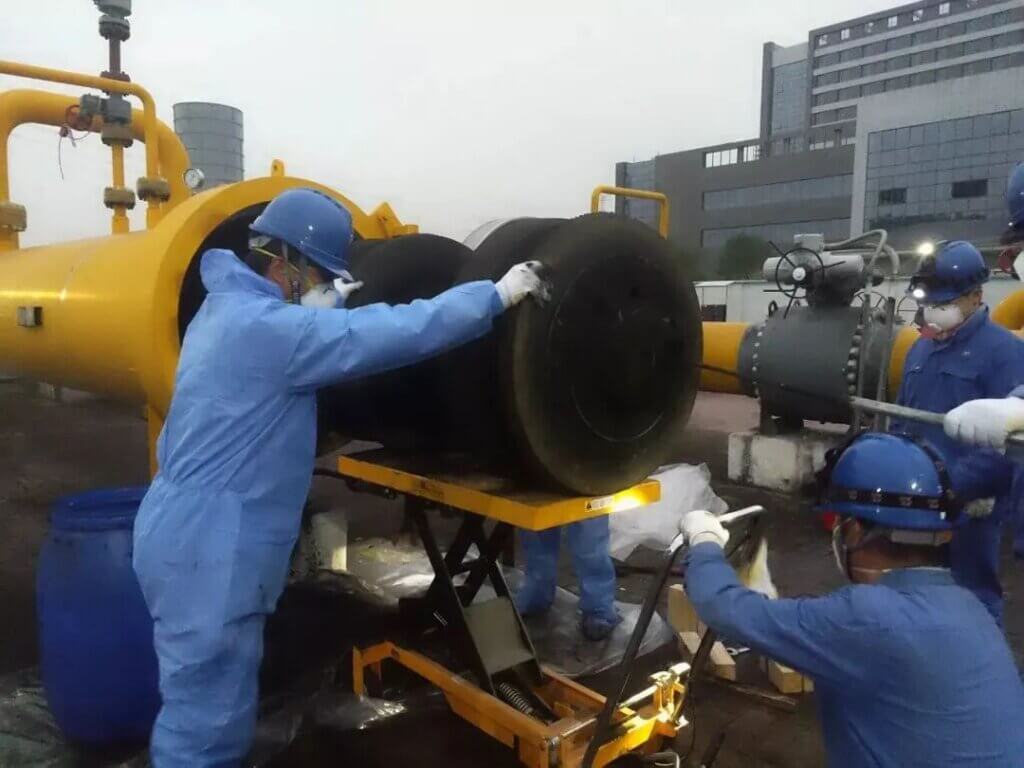Description
The LPR Corrosion Probe is an accurate and reliable instrument. It measures real-time corrosion rates in water systems. Corrosion rate calculations are based on measurements of the current response to small polarizations (10 – 20mV) of the corrosion potential of the steel electrode. The immediate response also makes LPR probes suitable for the rapid detection of oxygen intrusion into systems that should not contain oxygen. Examples include water injection systems to maintain the integrity of pipelines and assets. Retractable LPR probes are available in hydraulic and mechanical access fitting systems.
Specification
Pressure Rating: Standard 6,000psi (420bar) Optional: 10,000psi (690bar)
Maximum temperature: 145°C/293°F
Probe Element Material: Carbon Steel St 52-3N as standard
Probe base material: Standard materials are stainless steel and duplex steel
Connector: 6-pin Amphenol (male)

Features
1. (Conductive) operator when used in water systems. We have instant corrosion rate information available.
2. The operator can use the supporting telescopic tool to ensure convenient installation and replacement
3. It is compatible with access fitting systems from most suppliers. So users install it in the mainstream 2” probe position.
4. LPR probe measurements are easy to understand and correlate
5. The corrosion online monitoring system adopts professional and reliable probe design and production technology. This fundamentally improves the accuracy and sensitivity of corrosion monitoring. The system adopts a new instrument design concept. This greatly improves system stability and signal processing capabilities.

Corrosion detection in pipelines:
Pipeline corrosion detection refers to the detection of metal loss in the pipeline for the purpose of detecting pipe wall corrosion. This approach provides an understanding of in-service pipe damage in a working environment. Ensuring that defects and damage are detected before serious problems occur in pipelines is a fundamental solution to the problem. In the past, the traditional method of detecting pipeline damage was excavation inspection or pipeline pressure test.
This method is expensive and usually requires a stop loss to carry out. Magnetic leakage corrosion detector and ultrasonic detector are usually used in pipeline inspection. It can detect the size and location of corrosion pits, stress corrosion cracks, fatigue cracks and other damage.
In addition to high precision and high reliability, the intelligent high-resolution detector can also distinguish the defects inside and outside the pipe wall. Based on the analysis and evaluation of corrosion detection data, managers can develop economical and reasonable maintenance plans. This saves maintenance costs and can determine future safe operating conditions and the remaining life of the pipeline. It ensures the long-term safe and economic operation of the pipeline.

The need for a corrosion detection system
Corrosion problems exist in almost all walks of life. The oil refining industry operates under high temperatures and pressure. The medium is poisonous and harmful, flammable and explosive. Corrosion is therefore particularly serious in the oil refining industry. Corrosion monitoring and detection is the foundation and basis of the entire anti-corrosion work. It is the first link in the “supervision, management, and control” system of anti-corrosion work. Therefore, strengthening the corrosion monitoring and testing of equipment is of great significance to anti-corrosion work, and it is urgent.
1. Several common corrosion probes
Electrochemical probes, resistance probes, and inductance probes are currently widely used in online corrosion monitoring.
1.1 Electrochemical probes view corrosion as a function of the battery.
So the corrosion rate is proportional to the corrosion current. We can calculate the corrosion rate according to the corrosion current.
1.2 Measuring principle of resistance probe:
In corrosive media, the wires used as measuring elements will be corroded. At the same time, the length of the metal wire remains unchanged, the diameter decreases, and the resistance increases. We can convert the corrosion and thinning of the wire by testing the change in resistance. This in turn represents the amount of corrosion in the wall thickness.
1.3 Principle of inductance probe:
Corrosion and changing the probe directly affect the inductance, which in turn translates into reduced corrosion.
They are suitable for different temperatures, pressures and environments in applications. Some probes also have varying degrees of weakness. Therefore, in the process of use must be reasonable use, in order to achieve accurate and timely results.
2. Detachable installation of the probe under pressure
In the actual field, the probe is often installed with a detachable method under pressure. This installation method can disassemble and replace the probe without bypass and without shutdown. However, this method is mostly used in cryogenic equipment and pipelines. At this time, the manufacturer generally chooses oil-resistant gasket sealing materials. Its material is oil-resistant rubber asbestos board. The flange sealing surface selects the protruding sealing surface
3. Can not be installed with pressure flange
The non-pressurized flange installation of the LPR Corrosion Probe requires that the diameter of the pipeline to be tested is not less than 150mm. The length of the probe that goes deep into the pipeline is not less than 100mm. The short-circuit length shall not be less than 210mm. In order to ensure the stability of the probe, the manufacturer often adds an annular packing seal ring at the outlet of the short connection to play a fixed role.
4. Summary
Regardless of whether it is a detachable installation with pressure or a flange installation without pressure. Generally, it is recommended to install in bypass, sideline, or other switchable positions at high temperatures. This can reduce the chance of accidents and increase the safety factor. The selection, material, model, and environmental parameter indicators of short connections, flanges, and valves during the installation process must be consistent with the pipeline design standards.






Reviews
There are no reviews yet.